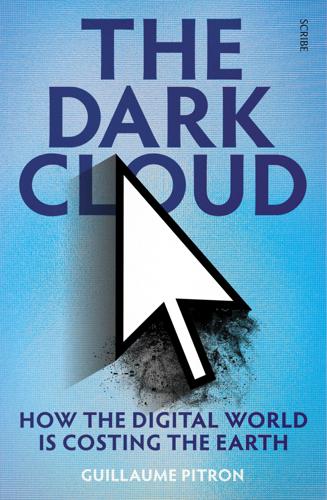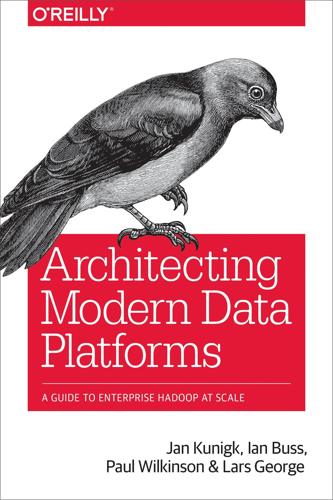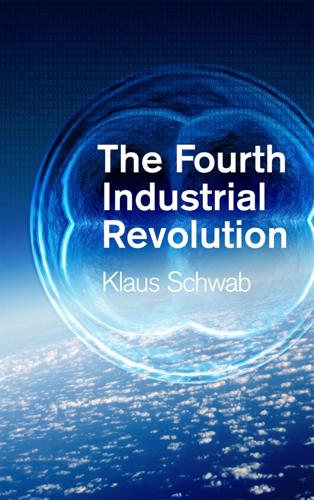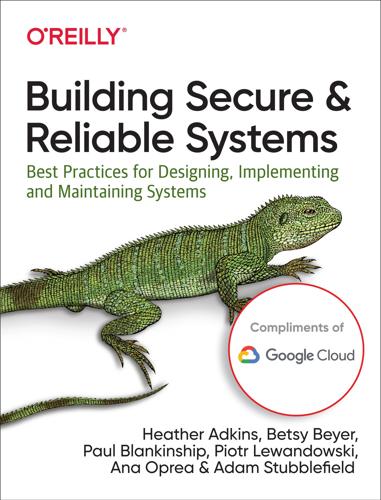hyperscale
description: refers to computing environments that can quickly scale in response to demand, commonly used in large data centres
18 results

The Age of Surveillance Capitalism
by
Shoshana Zuboff
Published 15 Jan 2019
abstract_id=2205145; Viktor Mayer-Schönberger and Kenneth Cukier, Big Data: A Revolution That Will Transform How We Live, Work, and Think (Boston: Houghton Mifflin Harcourt, 2013), 9. 22. Hilbert, “Toward a Synthesis of Cognitive Biases.” 23. Paul Borker, “What Is Hyperscale?” Digital Realty, February 2, 2018, https://www.digitalrealty.com/blog/what-is-hyperscale; Paul McNamara, “What Is Hyperscale and Why Is It so Important to Enterprises?” http://cloudblog.ericsson.com/digital-services/what-is-hyperscale-and-why-is-it-so-important-to-enterprises; James Manyika and Michael Chui, “Digital Era Brings Hyperscale Challenges,” Financial Times, August 13, 2014, http://www.ft.com/intl/cms/s/0/f30051b2-1e36-11e4-bb68-00144feabdc0.html?siteedition=intl#axzz3JjXPNno5; Cade Metz, “Building an AI Chip Saved Google from Building a Dozen New Data Centers,” Wired, April 5, 2017, https://www.wired.com/2017/04/building-ai-chip-saved-google-building-dozen-new-data-centers. 24.
…
See also Michael Chui and James Manyika, “Competition at the Digital Edge: ‘Hyperscale’ Businesses,” McKinsey Quarterly, March 2015. 15. One hundred more data centers are expected to be online by late 2018. Microsoft invested $20 billion in 2017, and in 2018 Facebook announced plans to invest $20 billion in a new hyperscale data center in Atlanta. According to one industry report, hyperscale firms are also building the world’s networks, especially subsea cables, which means that “a large portion of the global internet traffic is now running through private networks owned or operated by hyperscalers.” In 2016 Facebook and Google teamed up to build a new subsea cable between the US and Hong Kong, described as the highest-capacity transpacific route to date.
…
See João Marges Lima, “Hyperscalers Taking Over the World at an Unprecedented Scale,” Data Economy, April 11, 2017, https://data-economy.com/hyperscalers-taking-world-unprecedented-scale; João Marges Lima, “Facebook, Google Partners in 12,800Km Transpacific Cable Linking US, China,” Data Economy, October 13, 2016, https://data-economy.com/facebook-google-partners-in-12800km-transpacific-cable-linking-us-china; João Marges Lima, “Facebook Could Invest up to $20bn in a Single Hyperscale Data Centre Campus,” Data Economy, January 23, 2018, https://data-economy.com/facebook-invest-20bn-single-hyperscale-data-centre-campus. 16.

Empire of AI: Dreams and Nightmares in Sam Altman's OpenAI
by
Karen Hao
Published 19 May 2025
In the aughts, tech giants began trending in a different direction, consolidating all of their computing infrastructure into massive warehouses of servers in rural communities. The data center world became divided: There were the hyperscalers and there was everyone else. The four largest hyperscalers—Google, Microsoft, Amazon, Meta—now spend more money building data centers each year than almost all the others, relatively unknown developers like Equinix and Digital Realty, combined. It’s difficult to imagine what a hyperscale data center looks like if you’ve never seen one. Mél Hogan, an associate professor at Queen’s University in Canada who studies AI, infrastructure, and the environment, used to use football fields to describe them when she began to write about them roughly a decade ago.
…
Mél Hogan, an associate professor at Queen’s University in Canada who studies AI, infrastructure, and the environment, used to use football fields to describe them when she began to write about them roughly a decade ago. “Now football fields don’t even come close to the imaginaries of the required size,” she says. Hyperscalers call their data centers “campuses”—large tracts of land that rival the largest Ivy League universities, with several massive buildings densely packed with racks on racks of computers. Those computers emanate an unseemly amount of heat, like a laboring laptop a million times over. To keep them from overheating, the buildings also have massive cooling systems—large fans, air conditioners, or systems that evaporate water to cool down the servers.
…
Utility companies are now delaying the retirement of gas and coal plants and the transition to renewable energy; Microsoft restarted Three Mile Island, a nuclear plant near Middletown, Pennsylvania, that had a partial nuclear meltdown in the late 1970s, the worst commercial nuclear accident in US history. By 2030, at the current pace of growth, data centers are projected to use 8 percent of the country’s power, compared with 3 percent in 2022; AI computing globally could use more energy than all of India, the world’s third-largest electricity consumer. This scale—the mega-hyperscale—has created startling environmental consequences. And yet, in the very same moment, corporate obfuscation of that impact has reached new heights. Since Emma Strubell’s paper and Gebru’s citation in “Stochastic Parrots,” tech giants have hidden away even more of their models’ technical details, making it exceedingly hard to estimate and track their carbon footprints.

The Measure of Progress: Counting What Really Matters
by
Diane Coyle
Published 15 Apr 2025
Amazon Web S ervices (AWS) is the market leader by a country mile, followed by Microsoft’s Azure and (at a distance) Google, with a competitive fringe of smaller players trailing far behind these hyperscalers. AWS leads everywhere, as the cloud emerged from its decision in 2006 to offer an internal functionality to outside customers. The report found that the UK market is seeing revenues grow by 35–40 per cent a year. Each of the hyperscalers is building its own ecosystem, from the basic networks up to the software layer, and that competition focuses on customer acquisition. For like Hotel California, you can check out in principle, but you can never leave—the egress fees and technical frictions make switching very uncommon.
…
There are relatively few cloud service providers, unsurprisingly given the scale of investment required for a data centre. AWS dominates the market in the United States and everywhere else (and indeed founded it in 2006 by opening a previously internal function to external customers). It is followed by Microsoft’s Azure and Google (along with AWS known as hyperscalers), then some much smaller providers including Alibaba, IBM, Salesforce, Oracle, and Tencent. A summary by the UN task force looking at updating the SNA in 2025 for the digital economy proposes this definition: “Cloud computing s ervices consist of computing, data storage, software, and related IT services accessed remotely Box 3.1 Cloud computing use and productivity measurement To see the productivity measurement implications of a switch from investment in computer servers to purchases of cloud services as an intermediate, consider a simple production function, similar to the one set out in Chapter 2: Y + zC = f(A, K, L, N) (3.1) where Y is output, C is cloud capital with price z, A is total factor productivity, K is other capital, L is labour, and N is unmeasured intangible capital, with rental prices r, w, and h, respectively.
…
Currently, statistics combine cloud s ervices and hosting s ervices provided by ISPs (as “data processing, hosting, and related services or data processing, hosting, application services, and other IT infrastructure provisioning s ervices”). A more detailed breakdown would of course be desirable but would perhaps require different reporting by the hyperscalers, including revenues by country; Amazon’s published results do not contain statistically useful detail, and it is unclear how the company reports to each country’s statistical agencies. Figure 6.4 is Ofcom’s representation of the cloud stack. Measuring cross-border flows of cloud computing is challenging because the data centre could be overseas, and corporate customers are likely to have operations in more than one country.

The Thinking Machine: Jensen Huang, Nvidia, and the World's Most Coveted Microchip
by
Stephen Witt
Published 8 Apr 2025
Large-Scale Integration 3. New Venture 4. Thirty Days 5. Going Parallel 6. Jellyfish 7. Deathmatch 8. The Compulsion Loop 9. CUDA 10. Resonance 11. AlexNet Part II 12. O.I.A.L.O. 13. Superintelligence 14. The Good Year 15. The Transformer 16. Hyperscale 17. Money 18. Spaceships 19. Power 20. The Most Important Stock on Earth 21. Jensen 22. The Fear 23. The Thinking Machine Acknowledgments About the Author _150788602_ For Jane Practice even what seems impossible. —Marcus Aurelius Introduction This is the story of how a niche vendor of video game hardware became the most valuable company in the world.
…
On paper, Nvidia was still a gaming company, with retail GeForce sales supplying most of its revenue. Wall Street, looking forward, began to value it as a cutting-edge AI firm. Google’s bulk purchase of GPUs during Project Mack Truck was being replicated at other major tech firms, including Amazon, Oracle, and Microsoft. The business plan for these “cloud-service providers” was to build hyperscale data centers running tens or even hundreds of thousands of GPUs, then lease them to corporate customers. Cloud providers sold computing power in the manner of a utility, just like water or electricity. The data centers were located in unmarked industrial warehouses spread throughout the world.
…
With the transformer, that linguistic intuition had been captured in software. If AlexNet had been the first airplane, a rickety proof-of-concept, then the transformer was the jet engine. Shazeer and Uszkoreit, working together on a whiteboard, ensured everything about the transformer was built to accommodate hyperscale architecture, with massive amounts of data, massive numbers of parameters, and massive GPU clusters. As the project built momentum, the work grew frenzied; following one late-night crunch, Vaswani, sleep-deprived, recalled seeing neurons in the office curtain. In the final stage, the team ran “ablations,” deliberately disabling portions of the transformer code to understand what contributions they made.

The Dark Cloud: How the Digital World Is Costing the Earth
by
Guillaume Pitron
Published 14 Jun 2023
An icy white blanket covers the pavements, softening the steps of pedestrians, hunched over under the frozen weight of gravity, and absorbing the sound of their breath. At the same time, in a luxury hotel in old Montreal, one of the foremost conferences of the digital industry is taking place: Digital Infra Network Montreal. The event is abuzz with topics such as ‘hyperscale data centres’, ‘digital infrastructure energy efficiency’, ‘long-haul fibre optic networks’, ‘peripherals’, and ‘cloud computing’. Let’s face it: these are opaque concepts to most of us. And yet, without them, the everyday lives of billions of people would be thrown into disorder. For one thing, we would no longer be able to send billions of ‘likes’ every day on Facebook, YouTube, and LinkedIn.
…
But that doesn’t rule out efforts towards architectural integration, as Facebook has done with its elegant data centre in Prineville (Oregon), or its futuristic annexe built by CoreSite in Santa Clara (California).5 There is even a beauty contest for the world’s most beautiful data centre, recently won by MareNostrum in Barcelona — a 44.5 tonne beast encased in a glass box built in the nave of a deconsecrated chapel.6 Over ten or so years, the cloud has grown roots in all major communication hubs, from Washington, Hong Kong, Johannesburg, to Sao Paulo, and notably in the world’s most prominent financial centres, including London, Frankfurt, New York, Paris, and Amsterdam. Consequently, there are nearly three million data centres with a minimum surface area of 500 square metres, 85,000 intermediate-sized data centres, and 10,000 or so data centres more or less the same size as Equinix AM4.7 In the midst of this web of steel and concrete thrive over 500 ‘hyperscale’ data centres with surface areas sometimes as big as a football pitch. (See appendix 4.) Paul Benoit describes this concentration of cables, security equipment, IT and electric facilities as ‘ocean liners, the monsters of technology’.8 It’s an interesting paradox: the more we celebrate the shift of our economies towards the service sector, the more we talk about data ‘farms’, the ‘factories’ of the digital era, information ‘hubs’, ‘routes’, and ‘highways’ — remnants of agriculture and industry that the service sector was supposed to supplant … But why put so many cement mixers to work — at a considerable ecological cost, as we shall discover further on in the book — if it’s only to accumulate impalpable cat videos, emails, and geopositioning data?
…
And so, to tackle the root of the problem, phrases and words such as ‘energy performance’, ‘optimisation’, and ‘power usage effectiveness’ have in recent years become music to cloud companies’ ears.16 So much so, in fact, that ‘One of the industries making the most progress in terms of energy efficiency is data centres.’17 A greater centralisation of data in hyperscale structures that can accommodate thousands of servers is already optimising storage. Engineers in Switzerland and the Netherlands have come up with technology that cools data centres by immersing them in liquid solutions.18 More radical still is Microsoft: off the coast of the Orkney islands in northern Scotland, the company is experimenting with a new generation of subsea data centres, perhaps with the end goal of reflooring the seabed.19 Optimistic, if not presumptuous, industry players have the luxury of not having to dwell on the effectiveness of today’s technologies, for there are extraordinarily more effective innovations waiting in the wings to replace them.

Architecting Modern Data Platforms: A Guide to Enterprise Hadoop at Scale
by
Jan Kunigk
,
Ian Buss
,
Paul Wilkinson
and
Lars George
Published 8 Jan 2019
However, Hadoop distributors have reached out to embrace modularizing compute and storage, which they didn’t do early on. Yet the laws of physics still apply, and you can’t have it all. You need to colocate—or at least tightly couple compute and storage—or spend millions on your storage network infrastructure and operations, which typically only makes sense in the hyperscale context of public clouds. Everything Is Java Well, first of all, it’s not. Storage systems in the big data open source ecosystem today include Apache Kafka as well as Apache Kudu, which were introduced in Chapter 1. They are implemented in alternative languages, such as C/C++ or even Scala.
…
You may well be the proud operator of an infrastructure capable of spanning even a large Hadoop cluster. The one piece of advice we offer here is a strong recommendation to test rigorously. You must be certain that the latencies between your quorum services are not detrimental to HDFS performance under stress scenarios. Finally, quorum spanning with three datacenters is a very relevant case in hyperscale public cloud services. As you’ll see in Chapter 16, public cloud providers offer extremely capable network infrastructure between distinct datacenters in a given service region, also known as availability zones. Cloudera has recently updated its reference architecture for AWS to explicitly cover best practices for spanning a cluster across three availability zones.
…
This was in large part due to Hadoop’s distributed nature and its extensive reliance on local disks on each server for efficient operation. Running Hadoop on clouds thus often boils down to one question: can I store all my data in the cloud and process it efficiently? The answer is yes. Public cloud providers operate at such scale (often called hyperscale), that Hadoop environments and their high demand for I/O throughput can be accommodated at reasonable prices. In the meantime, Hadoop distributors have also acted on the significant opportunity of Hadoop in the cloud: they have massively invested in easing deployment (increasing performance and efficiency) as well as flexible cluster life cycle models (which support starting, growing, shrinking, and stopping on demand, without affecting the availability of data).

Hit Refresh: The Quest to Rediscover Microsoft's Soul and Imagine a Better Future for Everyone
by
Satya Nadella
,
Greg Shaw
and
Jill Tracie Nichols
Published 25 Sep 2017
We needed a sophisticated understanding of how to do two things at once—discern the intent of someone searching the Web and then match that intent with accurate knowledge gained from crawling the Web, ingesting and understanding information. Ultimately, Bing would prove to be a great training ground for building the hyper-scale, cloud-first services that today permeate Microsoft. We weren’t just building Bing, we were building the foundational technologies that would fuel Microsoft’s future. Building Bing taught us about scale, experimentation-led design, applied ML, and auction-based pricing. These skills are not only mission critical at our company, but highly sought after throughout today’s technology universe.
…
Every organization today needs new cloud-based infrastructure and applications that can convert vast amounts of data into predictive and analytical power through the use of advanced analytics, machine learning, and AI. From an infrastructure perspective, we would come to deliver on the promise of a global, hyper-scale cloud platform with dozens of unique data centers around the world. We would, over the years, invest billions of dollars each year to build out more and more infrastructure so that our customers could scale their solutions without worrying about their cloud platform’s capacity or the complex demands of transparency, reliability, security, privacy, and compliance.
…
See also United Kingdom British Raj, 16, 186–87 broadband infrastructure, 225 Buddha, Gautama, 9 Burgum, Doug, 47–48 cable TV, 30 Cairo, 214, 218 cameras, 150 Canada, 230 cancer, 142, 159, 214 Candidate, The (film), 75 capabilities, 122–23, 141 capitalism, 237–38 late-stage, 221 Capossela, Chris, 3, 71, 81–82 Carnegie Mellon, 3 Carney, Susan L., 177 Carroll, Pete, 4 Case, Anne, 236 Cavium Networks, 20 CD-ROM, 28 CEO as curator of culture, 100, 241 “disease,” 92 panoramic view of, 118 cerebral palsy, 8–10 Chang, Emily, 129 charter city, 229 Cheng, Lili, 197 chess, 198–99 Chik, Joy, 58 child exploitation, 190 Chile, 223, 230 China, 86, 195, 220, 222, 229, 232, 236 chip design, 25 CIA, 169 Cisco, 174 civil liberties, 172–73 civil rights, 24 civil society, 179 Civil War, 188 clarity, 119 Clayton, Steve, 155 client/server era, 45 climate change, 142, 214 Clinton, Hillary, 230 cloud, 13, 41–47, 49, 51–62, 68, 70, 73, 81, 88, 110, 125, 129, 131, 137, 140, 150, 164, 166, 172, 180–81, 186, 189–92, 216, 219, 223–25, 228 cloud-first mission and, 57–58, 70, 76, 79, 83 public, 42–43, 57 Cloud for Global Good, 240–41 Codapalooza, 104 cognition, 89, 150, 152–53 Cohen, Leonard, 10 collaboration, 88, 102–3, 106–8, 126, 135, 163–64, 166, 200 collaborative robots (co-bots), 204 collective IQ, 142, 143 Colombia, 78 Columbia University, 165 Comin, Diego, 216–17, 226 commitment, shared, 77, 119 Common (hip hop artist), 71 Common Objects in Context challenge, 151 communication, 76–77 Compaq, 29 comparative advantage, 222, 228 competition, internal, 52 competitive zeal, 38–39, 70–71, 102 competitors, 39 partnerships and, 78, 125–38 complexity, 25, 224 computers early, 21–22, 24–26 future platforms, 110–11 programs by, 153–54 computing power, massive, 150–51 Conard, Edward, 220 concepts, 122–23, 141 consistency, 77–78, 182 Constitution Today, The (Amar), 186–87 constraints, 119 construction companies, 153 consumers, 49–50, 222 context, shared, 56–57 Continental Congress, 185 Continuum, 73 Convent of Jesus and Mary (India), 19 Cook, Tim, 177 cook stoves, 43 coolness, 75–76 core business, 142 Cortana, 125, 152, 156–58, 195, 201 Couchbase company, 58 counterintuitive strategy, 56–57 Coupland, Douglas, 74 Courtois, Jean-Philippe, 82 courts, 184–85 Covington and Burling lawyers, 3 Cranium games, 7 creativity, 58, 101, 119, 201, 207, 242 credit rating, 43, 204–5 Creed (film), 44–45 cricket, 18–22, 31, 35–40, 115 Cross-country Historical Adoption of Technology (CHAT), 217 culture bias and, 205 “live site first,” 61 three Cs and, 122–23, 141 transforming, 2, 11, 16, 40, 76–78, 81–82, 84, 90–92, 98–103, 105, 108–10, 113–18, 120, 122–23, 241–42 Culture (Eagleton), 91 Curiosity (Mars rover), 144 customer needs, 42, 59, 73, 80, 83, 88, 99, 101–2, 108, 126, 138 customization, 151 cybersecurity, 171, 190 cyberworld, rules for, 184 data, 60, 151 data analytics, 50 databases, 26 Data General company, 68 data management, 54 data platform, 59 data security, 175–76, 188–89 Deaton, Angus, 236 Deep Blue, 198–99 deep neural networks, 153 Delbene, Kurt, 3, 81–82 Delhi, India, 19, 31, 37 Dell, 63, 87, 127, 129–30 Dell, Michael, 129 democracy, 180 democratization, 4, 13, 69, 127, 148, 151–52 Deng Xiaoping, 229 Depardieu, Gerard, 33 design, 50, 69, 141, 239 desktop software, 27 Detroit, 15, 225, 233 developed economies, 99–100 share of world income, 236 developing economies, 99–100, 217, 225 device management solutions, 58 digital assistants, 142, 156–58, 195–98, 201 digital cable, 28 digital evidence, 191–92 Digital Geneva Convention, 171–72 digital ink, 142 digital literacy, 226–27 digital publishing laws, 185 digital transformation, 70, 126–27, 132, 235 dignity, 205 disabilities, 103, 200 disaster relief, 44 Disney, 150 disruption, 13 distributed systems, 49 diversity, 101–2, 108, 111–17, 205–6, 238, 241 Donne, John, 57 drones, 209, 226 Drucker, Peter, 90 dual users, 79 Dubai, 214, 228 Duke University, 3 Dupzyk, Kevin, 147 D-Wave, 160 Dweck, Carol, 92 dynamic learning, 100 Dynamics, 121 Dynamics 365, 152 dyslexia, 44, 103–4 Eagleton, Terry, 91 earthquakes, 44 EA Sports, 127 economic growth, 211–34 economic inequality, 12, 207–8, 214, 219–21, 225, 227, 236–41 Edge browser, 104 education, 42–44, 78, 97, 104, 106–7, 142, 145, 206–7, 224, 226–28, 234, 236–38 Egypt, 218–19, 223, 225 E-health companies, 222–23 8080 microprocessor, 21 elasticity, 49 electrical engineering (EE), 21–22 elevator and escalator business, 60 Elop, Stephen, 64, 72 email, 27, 169–73, 176 EMC, 129 emotion, 89, 197, 201 emotional intelligence (EQ), 158, 198 empathy, 6–12, 16, 40, 42–43, 93, 101, 133–34, 149, 157, 182, 197, 201, 204, 206, 226, 239, 241 employee resource groups (ERGs), 116–17 employees, 66–68, 75, 138 diversity and, 101, 111–17 empowerment and, 79–80, 126 global summit of, 86–87 hackathon, 10–11 talent development and, 117–18 empowerment, 87–88, 98–99, 106, 108–10, 126 encryption, 161–62, 175, 192–93 energy, generating across company, 119 energy costs, 237 Engelbart, Doug, 142 Engelbart’s Law, 142–43 engineers, 108–9 Enlightiks, 222–23 Enterprise Business, 81 entertainment industry, 126 ethics, 195-210, 239 Europe, 193 Excel, 121 experimental physicists, 162–64 eye-gaze tracking, 10 Facebook, 15, 44, 51, 125, 144, 174, 200, 222 failures, overcoming, 92, 111 Fairfax Financial Holdings, 20 fairness, 236 Federal Bureau of Investigation (FBI), 170, 177–78, 189 Federal Communications Commission (FCC), 28 fear of unknown, 110–11 feedback loop, 53 fertilizer, 164 Feynman, Richard, 160 fiefdoms, 52 field-programmable gate arrays (FPGAs), 161 Fields Medal, 162 firefighters, 43, 56 First Amendment, 185, 190 Flash, 136 focus, 135–36, 138 Foley, Mary Jo, 52 Ford Motor Company, 64 foreign direct investment, 219, 225, 229 Foreign Intelligence Surveillance Act (FISA), 173 Fourth Amendment, 185–88, 190, 193 France, 223, 236 Franco, James, 169 Franklin, Benjamin, 186 Freedman, Michael, 162, 166 free speech, 170–72, 175, 179, 185, 190, 238 Fukushima nuclear plant, 44 G20 nations, 219 Galaxy Explorer, 148 game theory, 123–24 Gandhi, Mohandas Mahatma, 16 Gartner Inc., 145 Gates, Bill, 4, 12, 21, 28, 64, 46, 67–69, 73–75, 87, 91, 127, 146, 183, 203 Gavasker, Sunil, 36 GE, 3, 126–27, 237 Gelernter, David, 143, 183 Geneva Convention, Fourth (1949), 171 Georgia Pacific, 29 Germany, 220, 223, 227–36 Gervais, Michael, 4–5 Gini, Corrado, 219 Gini coefficient, 219–21 GLEAM, 117 Gleason, Steve, 10–11 global competitiveness, 78–79, 100–102, 215 global information, policy and, 191 globalization, 222, 227, 235–37 global maxima, 221–22 goals, 90, 136 Goethe, J.W. von, 155 Go (game), 199 Goldman Sachs, 3 Google, 26, 45, 70–72, 76, 127, 160, 173–74, 200 partnership with, 125, 130–32 Google DeepMind, 199 Google Glass, 145 Gordon, Robert, 234 Gosling, James, 26 government, 138, 160 cybersecurity and, 171–79 economic growth and, 12, 223–24, 226–28 policy and, 189–92, 223–28 surveillance and, 173–76, 181 Grace Hopper, 111–14 graph coloring, 25 graphical user interfaces (GUI), 26–27 graphics-processing unit (GPU), 161 Great Convergence, the (Baldwin), 236 Great Recession (2008), 46, 212 Greece, 43 Green Card (film), 33 Guardians of Peace, 169 Gutenberg Bible, 152 Guthrie, Scott, 3, 58, 60, 82, 171 H1B visa, 32–33 habeas corpus, 188 Haber, Fritz, 165 Haber process, 165 hackathon, 103–5 hackers, 169–70, 177, 189, 193 Hacknado, 104 Halo, 156 Hamaker, Jon, 157 haptics, 148 Harvard Business Review, 118 Harvard College, 3 Harvey Mudd College, 112 Hawking, Stephen, 13 Hazelwood, Charles, 180 head-mounted computers, 144–45 healthcare, 41–42, 44, 142, 155–56, 159, 164, 198, 218, 223, 225, 237 Healthcare.gov website, 3, 81, 238 Heckerman, David, 158 Hewlett Packard, 63, 87, 127, 129 hierarchy, 101 Himalayas, 19 Hindus, 19 HIV/AIDS, 159, 164 Hobijn, Bart, 217 Hoffman, Reid, 232, 233 Hogan, Kathleen, 3, 80–82, 84 Holder, Eric, 173–74 Hollywood, 159 HoloLens, 69, 89, 125, 144–49, 236 home improvement, 149 Hong Kong, 229 Hood, Amy (CFO), 3, 5, 82, 90 Horvitz, Eric, 154, 208 hospitals, 42, 78, 145, 153, 223 Hosseini, Professor, 23 Huang, Xuedong, 151 human capital, 223, 226 humanistic approach, 204 human language recognition, 150–51, 154–55 human performance, augmented by technology, 142–43, 201 human rights, 186 Hussain, Mumtaz, 36, 37 hybrid computing, 89 Hyderabad, 19, 36–37, 92 Hyderabad Public School (HPS), 19–20, 22, 37–38, 136 hyper-scale, cloud-first services, 50 hypertext, 142 IBM, 1, 160, 174, 198 IBM Watson, 199–200 ideas, 16, 42 Illustrator, 136 image processing, 24 images, moving, 109 Imagine Cup competition, 149 Immelt, Jeff, 237 Immigration and Naturalization Act (1965), 24, 32–33 import taxes, 216 inclusiveness, 101–2, 108, 111, 113–17, 202, 206, 238 independent software vendor (ISV), 26 India, 6, 12, 17–22, 35–37, 170, 186–87, 222–23, 236 immigration from, 22–26, 32–33, 114–15 independence and, 16–17, 24 Indian Administrative Service (IAS), 16–17, 31 Indian Constitution, 187 Indian Institutes of Technology (IIT), 21, 24 Indian Premier League, 36 IndiaStack, 222–23 indigenous peoples, 78 Indonesia, 223, 225 industrial policy, 222 Industrial Revolution, 215 Fourth or future, 12, 239 information platforms, 206 information technology, 191 Infosys, 222 infrastructure, 88–89, 152–53, 213 innovation, 1–2, 40, 56, 58, 68, 76, 102, 111, 120, 123, 142, 212, 214, 220, 224, 234 innovator’s dilemma, 141–42 insurance industry, 60 Intel, 21, 45, 160, 161 intellectual property, 230 intelligence, 13, 88–89, 126, 150, 154–55, 160, 169, 173, 239 intelligence communities, 173 intensity of use, 217, 219, 221, 224–26 International Congress of the International Mathematical Union, 162 Internet, 28, 30, 48, 79, 97–98, 222 access and, 225–26, 240 security and privacy and, 172–73 Internet Explorer, 127 Internet of Things (IoT), 79, 134, 142, 228 Internet Tidal Wave, 203 Intersé, 3 Interview, The (film), 169–71 intimidation, 38 investment strategy, 90, 142 iOS devices, 59, 72, 123, 132 iPad, 70, 141 iPad Pro, 123–25 iPhone, 70, 72, 85, 121–22, 125, 177–79 Irish data center, 176, 184 Islamic State (ISIS), 177 Istanbul, 214 Jaisimha, M.L., 18, 36–37 Japan, 44, 223, 230 Japanese-American internment, 188 JAVA, 26 Jeopardy (TV show), 199 Jha, Rajesh, 82 jobs, 214, 231, 239–40.

The Network Imperative: How to Survive and Grow in the Age of Digital Business Models
by
Barry Libert
and
Megan Beck
Published 6 Jun 2016
Today’s leading organizations are network-centric and are creating remarkable economic returns by capitalizing on network advantages, such as co-creation with their customers (Facebook); digital platforms (Amazon); shared assets (Uber and Airbnb); and big data insights (Netflix and Google). Leaders and investors who want to participate in the network revolution need to envision their future, and the future of their industry, based on intangibles and networks or risk falling behind. The Network Imperative provides the why and how to survive and thrive in the age of hyperscale digital networks. It defines the ten principles for network organizations and a five-step process for pivoting your organization toward today’s most valuable and profitable business models. Join the network movement online at openmatters.com. DIGITAL NETWORKS ARE EATING THE WORLD Why is it so difficult for established companies to pull off the new growth that business model innovation can bring?
…
Most of these companies are racing to update their strategy, leadership, technology, and organizational design, but the performance gap is widening. This book is intended to help those firms that are not digital start-ups or technology superstars bridge the gap and create unprecedented growth and value in the age of hyperscale digital networks. You may feel that network disruption is a distant concern for your business or irrelevant for your industry, and that you have more-pressing concerns, but be aware: investor capital, customer revenue and affinity, top talent, and market buzz are shifting away from established firms toward network organizations.

The Docker Book
by
James Turnbull
Published 13 Jul 2014
Countering this argument is that lightweight containers lack the larger attack surface of the full operating system needed by a virtual machine combined with the potential exposures of the hypervisor layer itself. Despite these limitations, containers have been deployed in a variety of use cases. They are popular for hyperscale deployments of multi-tenant services, for lightweight sandboxing, and, despite concerns about their security, as process isolation environments. Indeed, one of the more common examples of a container is a chroot jail, which creates an isolated directory environment for running processes. Attackers, if they breach the running process in the jail, then find themselves trapped in this environment and unable to further compromise a host.
…
Building and testing complex applications and architectures on a local host prior to deployment into a production environment. Building a multi-user Platform-as-a-Service (PAAS) infrastructure. Providing lightweight stand-alone sandbox environments for developing, testing, and teaching technologies, such as the Unix shell or a programming language. Software as a Service applications; Highly performant, hyperscale deployments of hosts. You can see a list of some of the early projects built on and around the Docker ecosystem in the blog post here. Docker with configuration management Since Docker was announced, there have been a lot of discussions about where Docker fits with configuration management tools like Puppet and Chef.

The Fourth Industrial Revolution
by
Klaus Schwab
Published 11 Jan 2016
While respecting the concerns of Professor Christensen and his colleagues about definitions, I have employed the broader meanings in this book. 2 Erik Brynjolfsson and Andrew McAfee, The Second Machine Age: Work, Progress, and Prosperity in a Time of Brilliant Technologies, W.W. Norton & Company, 2014. 3 James Manyika and Michael Chui, “Digital Era Brings Hyperscale Challenges”, The Financial Times, 13 August 2014. 4 The designer and architect Neri Oxman offers a fascinating example of what I just described. Her research lab works at the intersection of computational design, additive manufacturing, materials engineering and synthetic biology. https://www.ted.com/talks/neri_oxman_design_at_the_intersection_of_technology_and_biology 5 Carl Benedikt Frey and Michael Osborne, with contributions from Citi Research, “Technology at Work – The Future of Innovation and Employment”, Oxford Martin School and Citi, February 2015.

Gambling Man
by
Lionel Barber
Published 3 Oct 2024
‘It’s like the Cambrian Explosion,’ he says, referring to the proliferation of complex animal species which began life on earth more than 500 million years ago. In this new world, dozens of new companies will be born, with dozens of applications in areas like smart robotics, autonomous driving cars and smart logistics. Masa knows he has ground to make up, fast. The balance of power in the technology arms race rests not with SoftBank but with the ‘hyperscalers’ like Amazon, Microsoft, Google and Meta, who are deep into AI. These are the new East India Companies, businesses with global reach, vast stores of capital and world-class technology. For a brief period, thanks to the Vision Fund, Masa could match these behemoths in terms of capital. His dream was to create a pool of assets of $1 trillion or more, with annual returns of up to 30 per cent.
…
Even though he remains mistrusted by the Japanese establishment, Masa retains an extraordinary loyalty among Japanese retail investors and those institutional players who have had the stomach to stay with him on his wild ride, following the old lesson of ‘buying on the dip’. So while it is true that Masa cannot touch the likes of Amazon, Google and Microsoft, he is nowhere near out of options. He is a customer and supplier to the hyperscalers. His new chip-making venture involves billions of dollars of investment, drawing in Middle East money and partners from all over the world as well as SoftBank’s own contribution. Once a mass-production system is established, the AI chip business could be spun off, realizing billions of dollars of value to its parent SoftBank.

Internet for the People: The Fight for Our Digital Future
by
Ben Tarnoff
Published 13 Jun 2022
While venture is only one source of financing for tech companies—a larger share is made up from hedge funds, mutual funds, investment banks, and the bond and equity markets—it exerts special influence because of its close historical ties with the industry, and its influence can be seen in the way that many tech companies operate. As venture funds are designed to demand large returns, this hunger for hyperscale is passed on to startups in the form of an imperative to grow at any cost. Then, once the company has acquired enough market share, it can use its dominant position to achieve the profits that its investors require. This was a popular strategy in the 1990s boom and one successfully pursued by Amazon, though it never burned through as much cash as Uber.

Vassal State
by
Angus Hanton
Published 25 Mar 2024
Officials were following the same centralised guidelines as the Department for Work and Pensions, who admitted they had adopted a policy of procuring public cloud services only from Amazon, Google or Microsoft. Soon after the DataCentred contract was terminated in 2017, an HMRC official explained: ‘Hyperscale cloud technology is newly available in the UK and the larger cloud capability offers more resilient services at a significantly lower cost to the taxpayer.’4 The UK start-up went into administration just a few weeks later. It was therefore no help to him that, by 2023, the UK government was spending almost £3 billion annually on cloud services, mostly with AWS.5 Nor was it any comfort that in October 2023 the UK’s Competition and Markets Authority (CMA) launched an investigation into the 70–80 per cent market share held by Amazon and Microsoft.6 West Coast software is wall-to-wall The UK government has very few significant domestic suppliers for its IT and computer systems, and instead buys from Oracle, IBM, Microsoft and other US companies.

A New History of the Future in 100 Objects: A Fiction
by
Adrian Hon
Published 5 Oct 2020
Most of the time, I think they have humanity’s interests at heart. One lifetime. It’s not enough to save a fraction of the lives that need saving. But just one will do. 99 OUR UNIMPROVED SIMULATION Sol System, 2079 Our universe is a computational simulation. Could be? Maybe? Definitely. The latest results out of the Hyperscale Collider consortium leave little to the imagination. I quote: Precision measurements of the energy spectrum of the muon g-2 have led to the discovery of a nonzero lattice spacing. This is indicative of the possibility that our universe exists in an unimproved lattice quantum chromodynamics simulation.

Superminds: The Surprising Power of People and Computers Thinking Together
by
Thomas W. Malone
Published 14 May 2018
—Esther Dyson, executive founder of Way to Wellville and author of Release 2.1 “After helping introduce the phrase ‘future of work’ in his 2004 book with that name, Tom Malone is back to remind us that the real impact of technology will come not only from AI but also from harnessing human minds at hyperscale. In this terrific, well-researched, and highly readable book, he explores provocatively and practically the opportunities and challenges that superminds will help us address in businesses and society. Leaders who care about harnessing the power of human minds in a world enabled by digital technologies must read this book.”

Fancy Bear Goes Phishing: The Dark History of the Information Age, in Five Extraordinary Hacks
by
Scott J. Shapiro
any of its rivals: One prominent rival, the vDOS botnet, advertised their rate as “up to 50 gigabits per second”: Brian Krebs, “Israeli Online Attack Service ‘vDOS’ Earned $600,000 in Two Years,” Krebs on Security, September 8, 2016, https://krebsonsecurity.com/2016/09/israeli-online-attack-service-vdos-earned-600000-in-two-years/. largest cloud provider in Europe: Matthew Gooding, “Is Europe’s OVHcloud Ready to Take on the US Cloud Hyperscalers?,” Tech Monitor, September 21, 2021, https://techmonitor.ai/technology/cloud/ovhcloud-ipo-cloud-computing-aws-azure. stir up this kind of trouble?: Some noted that OVH had one controversial client: WikiLeaks. Their hosting of WikiLeaks sparked speculation that a nation-state, such as the United States, was trying to silence Julian Assange for his interference in its election.

Building Secure and Reliable Systems: Best Practices for Designing, Implementing, and Maintaining Systems
by
Heather Adkins
,
Betsy Beyer
,
Paul Blankinship
,
Ana Oprea
,
Piotr Lewandowski
and
Adam Stubblefield
Published 29 Mar 2020
Michał Zalewski, VP of Security Engineering at Snap, Inc. and author of The Tangled Web and Silence on the Wire This is the “real world” that researchers talk about in their papers. JP Aumasson, CEO at Teserakt and author of Serious Cryptography Google faces some of the toughest security challenges of any company, and they’re revealing their guiding security principles in this book. If you’re in SRE or security and curious as to how a hyperscaler builds security into their systems from design through operation, this book is worth studying. Kelly Shortridge, VP of Product Strategy at Capsule8 If you’re responsible for operating or securing an internet service: caution! Google and others have made it look too easy. It’s not. I had the privilege of working with these book authors for many years and was constantly amazed at what they uncovered and their extreme measures to protect our users’ data.

Seeking SRE: Conversations About Running Production Systems at Scale
by
David N. Blank-Edelman
Published 16 Sep 2018
While the SRE, AppOps, and SWE teams focused on scaling the website and infrastructure for web-based services, users started transitioning from desktop to mobile, and the whole company was reprioritized to follow a mobile-first strategy. This significantly increased service complexity and accelerated the need to provision an ever-increasing amount of infrastructure. The scaling of Facebook’s services in a mobile world, combined with hyper-scale customer growth, overwhelmed the SRE and AppOps teams. The majority of the AppOps engineers had to be on call 24/7, and firefighting was the norm. As user growth and complexity increased, both SRE and AppOps were unable to focus on recruiting and couldn’t hire additional staff for months, pushing the teams further underwater.